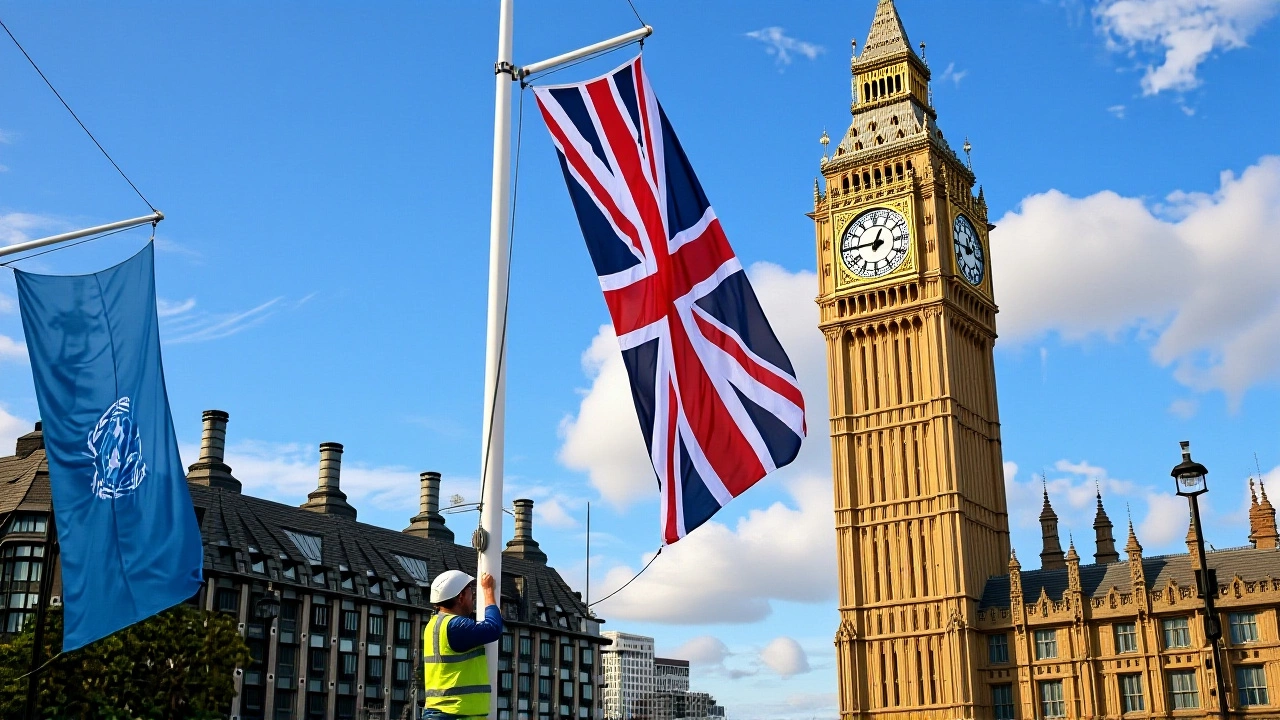Big Ben to Pause for GPS‑Calibrated Fix as UK Falls Back to GMT

At exactly 2:00 AM GMT on Sunday, October 26, the world‑famous Big Ben will go silent for about thirty minutes while a four‑person team tweaks the mechanism to line up with the United Kingdom’s switch from British Summer Time to Greenwich Mean Time.
During the brief halt, senior clocksmith Ian Westworth, who has tended the clock since the late 1990s, will lead the effort inside Elizabeth Tower at the Houses of Parliament. The work will address a recently heard squeak, recalibrate the GPS timing system installed during a £29 million restoration that wrapped up in 2021, and verify that all four faces show the same second‑by‑second time before the bell rings again.
Historical background – a clock that’s kept the nation on time
The great bell, weighing 13 tons, has swung above the Palace of Westminster since its inaugural strike on July 11 1859. Its original mechanism was built by Dent & Co. under the supervision of clockmaker Benjamin Vulliamy. Since then the clock has become a symbol of stability; even during the Blitz it kept ticking, its chimes echoing over London’s ruined streets.
Big Ben has been silenced only a handful of times for major works – from 1983‑1985, the 2007 refurbishment, and the four‑year overhaul that began in 2017. That most recent project introduced a service elevator, upgraded the pendulum’s regulation, and fitted a satellite‑linked GPS receiver that lets engineers check timekeeping down to the hundredth of a second.
Maintenance details – what the team will actually do
When the clock stops, the team will climb the 315‑foot tower via the new elevator, then:
- Inspect the escapement gear for wear and replace any worn pins.
- Use a handheld GPS receiver to compare the tower’s internal clock with Coordinated Universal Time (UTC) signals from the UK’s ground stations.
- Apply micro‑adjustments with the traditional penny‑on‑the‑pendulum technique – a nod to Victorian precision.
- Lubricate the pendulum suspension spring and test the hammer’s strike force.
The squeak that prompted the latest check was first reported by a night‑shift worker in September. While it didn’t affect accuracy, engineers prefer to nip any mechanical whisper before it becomes a clank.
Voices from Parliament – why the chimes matter
Labour MP Stephen Kinnock reminded the House in a 2021 debate that “the sound of this bell represents stability, continuity, and freedom.” He added that Londoners often tweet, “Big Ben’s off again!” after the autumn and spring clock changes, not realizing the pause is scheduled.
Meanwhile, DeltaLive analyst Mark Powell confirmed the GPS data shows the tower’s time was within 0.019 seconds of the official midnight strike on New Year’s Eve 2023, a feat he likened to “blinking twice faster than a hummingbird.”

Technical aspects – GPS calibration and the pendulum
The GPS module, installed in 2021, receives signals from at least four satellites, allowing the clock’s control unit to calculate the exact offset from UTC every 10 seconds. If the offset exceeds 0.001 seconds, the system nudges the pendulum’s length by moving a tiny brass screw, a method first tried in the 1980s but now fully automated.
Even with digital aid, the famous 1.5‑second pendulum still relies on the weight of the 3‑million‑penny set placed on its bob for the tiniest tweaks. That blend of old‑world craft and modern technology is what keeps the four faces—each 23 feet in diameter—synchronized.
Public reaction and cultural significance
London’s 9 million residents and the roughly 38 million tourists who visit annually treat the bell as a city heartbeat. After the 2021 restoration, crowds gathered in Parliament Square on August 21, 2017, to hear the final chimes before the tower fell silent for four years.
Local council data shows that during each October clock change, the Metropolitan Police receive an average of 215 calls reporting “Big Ben not ringing,” most of which turn out to be normal scheduled pauses. The misconception underscores how deeply the chimes are woven into daily life.

Looking ahead – what’s next for the tower?
After the autumn pause, the clock will run uninterrupted until the spring shift in March 2026, when it will again stop for a brief 30‑minute check. Long‑term plans include a climate‑resilience study to protect the tower’s masonry from increasing humidity, and a proposal to install a secondary, low‑power backup oscillator that would keep the faces moving even if the main pendulum needed a full overhaul.
For now, the public can expect the familiar resonant “bongs” to resume at 2:04 AM GMT, just as the city settles back into winter darkness.
Frequently Asked Questions
Why does Big Ben stop when the UK changes the clocks?
The clock is taken offline for about thirty minutes so engineers can verify that the GPS‑linked timing system and the mechanical pendulum are perfectly aligned with the new legal time. Without the pause, any mis‑alignment would keep the tower off by fractions of a second.
Who is responsible for the maintenance?
A dedicated team from the Houses of Parliament Clock Maintenance Department, led by senior clocksmith Ian Westworth, handles the bi‑annual checks.
How accurate is Big Ben compared to modern time standards?
Since the 2021 GPS upgrade, the clock’s strike has been measured within 0.02 seconds of Coordinated Universal Time, making it one of the world’s most precise historic timepieces.
What happens if the clock malfunctions outside the scheduled pause?
Any unscheduled fault would trigger an immediate investigation by the same maintenance crew, who can access the tower via the service elevator and perform emergency repairs, often within a few hours.
Will the public be able to watch the maintenance?
The tower is not open to visitors during the work for safety reasons, but live updates are usually posted on the Houses of Parliament website and social channels.